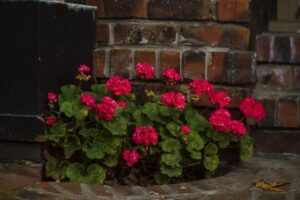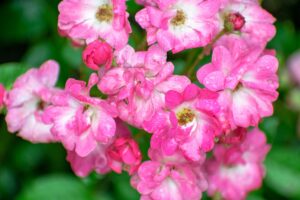A Short History of the Geranium
A Short History of the Geranium
Geraniums have been one of the most popular flowers in American gardens for over 200 years. Few plants offer such a wide variety of colors, scents, and leaf patterns as do geraniums. Adding to their popularity is their outstanding performance in containers, both outdoors and indoors in a sunny window. They also thrive in outdoor beds, adding a wide variety of color throughout the growing season.
Discovered in South Africa, the first geranium plants quickly gained acceptance in England in the 17th century. But it wasn’t until Thomas Jefferson shipped the plant from France to America in 1786 that the plant gained popularity in American gardens.
For centuries, geraniums had to be grown from cuttings. Favorite varieties were passed down from generation to generation. However, in l962 (just a year before my father purchased the greenhouses that later became Town & Country Gardens) breeders at Pennsylvania State University developed the first commercially successful seed propagated geranium, ‘Nittany Lion Red’, a bright red geranium with single flowers. Four years later, Harris Seed Company developed the first F1 hybrid geranium from seed. Two years later PanAmerican Seed Company’s ‘Carefree’ series went on to win the coveted All-America Selections (AAS) award.
Zonal (cutting propagated) geraniums are as popular as ever, as they have larger flowers and perform well in patio pots. Geraniums grown from seed are more often used for planting in flower beds and borders as their flowers are more numerous and they have a more branching growth habit. Seed geraniums also tend to be less expensive, lending themselves better to mass plantings.
Another popular form of geranium is the ivy leaf. It has a hanging habit and is usually planted in hanging baskets or window boxes. This is a picture of a basket I had on my patio a few years ago. Ivy geraniums are one of the easiest plants to grow in baskets because they tolerate dry soil better than most, meaning they will bounce right back if you forget to water them one day.




